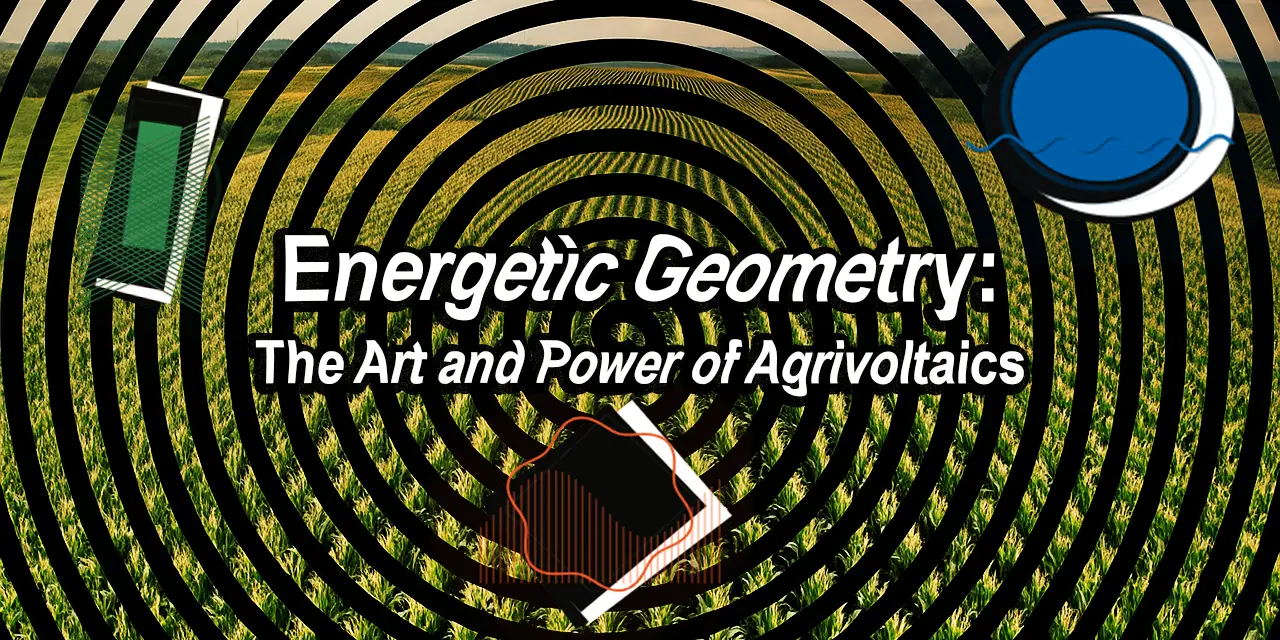About
Energetic Geometry: The Art and Power of Agrivoltaics is an interactive web-based visualization that reimagines agrivoltaic data as abstract, geometric visuals—blending art, science, and creative coding into an accessible experience.

What is Agrivoltaics?
Agrivoltaics is the practice of co-locating solar infrastructure with agricultural activity—whether that means planting crops beneath the panels, restoring habitat, or rotating livestock through a solar panel field (also known as a photovoltaic or PV field). Rather than treating farmland and solar sites as separate choices, this hybrid approach combines them in new and adaptable ways.
Artistic Foundations
The visual logic is shaped by influences from abstraction, systems-based art, and perceptual design. Suprematist works by Kazimir Malevich and El Lissitzky inform its geometric clarity and spatial structure, while Sol LeWitt's conceptual art frames the generative code as a system for executing ideas.
Dynamic, rule-based visuals reflect the procedural approaches of Casey Reas, Ben Fry, and Vera Molnár, who transform data into visual form. Optical strategies drawn from Bridget Riley and Victor Vasarely amplify motion and ecological rhythm, while Marius Watz contributes a sense of generative flow and systemic emergence.
Helvetica, selected to align with Robert Bringhurst's principles of clarity and restraint, provides a neutral typographic foundation that supports the visual complexity without distraction.
Data Source
This project draws on publicly available data from the Innovative Solar Practices Integrated with Rural Economies and Ecosystems (InSPIRE) Agrivoltaics Map —a project led by the U.S. Department of Energy and managed by the National Renewable Energy Laboratory. InSPIRE supports the growth of agrivoltaics by providing open data, field research, and tools that promote sustainable solar-agriculture practices. Their dataset forms the foundation for the visual translations in this project.
A New Kind of Visualization
By weaving abstraction, data, and creative code—with p5.js as a key catalyst, Energetic Geometry celebrates agrivoltaics as a thriving balance of energy and life, where solar panels power the land above and rich ecosystems flourish below. Moving beyond conventional charts and diagrams, it invites users to engage with data through a different lens. Generative data visualization opens a window to deeper understanding by unfolding patterns, relationships, and systemic dynamics that might otherwise remain unseen.